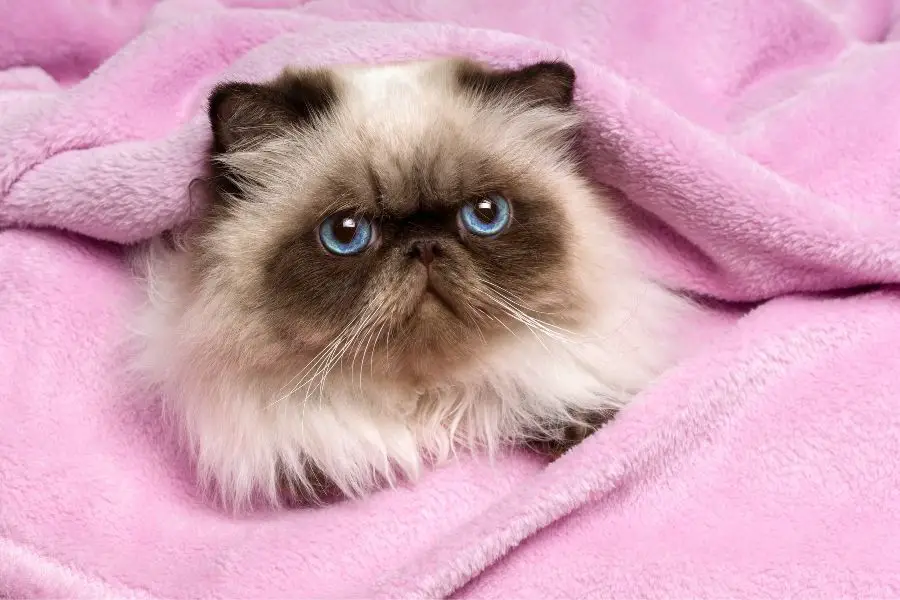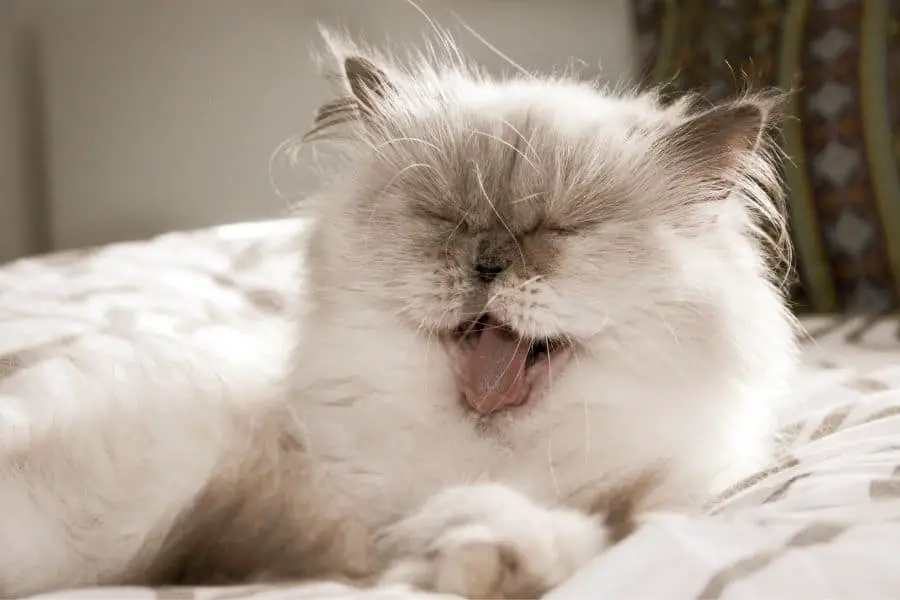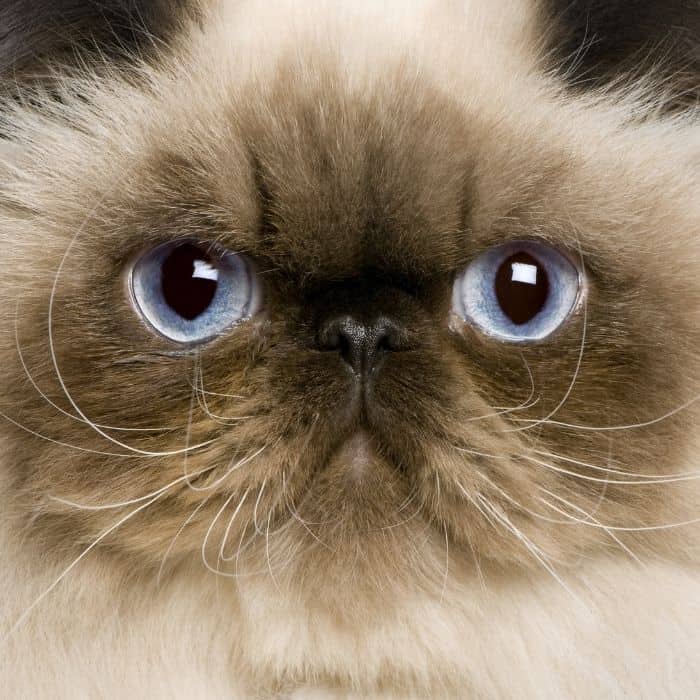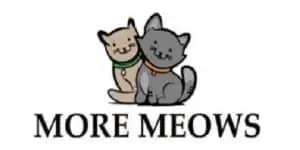More Meows is an Amazon Associate. As an Amazon Associate we earn from qualifying purchases. We may also earn commissions if you purchase products from other retailers after clicking on a link from our site.
Persian cats are known to illicit images of luxurious, thick, and flowing manes. Stunning color combinations set off against equally mesmerizing eyes can make any cat lover consider the Persian as their next feline companion or show champion.
There are various factors to bear in mind when looking at a myriad of potential breeds with long or short hair. Or is it fur? Is there any difference between the two? When you speak about cat hairs everywhere, and suddenly you are unsure if that statement is correct, especially in a long-haired cat like the Persian, why not find out once and for all. Do Persian cats have hair or fur?
Persian cats have fur. Persian cats are bred to specific standards, including guidelines for their long, multi-layered, and soft fur. A single strand is known as a hair, but, in the case of the Persian, it has fur so dense it is almost impossible to separate them.
Persian cats’ fur is so different from short hair breeds that it justifies explaining the Persian’s unique makeup and why it is so popular. Another question may be what do you need to do with your Persian cat’s fur to keep it looking perfect? Below we look at some distinctions between hair and fur as well as methods of keeping your Persian groomed and happy.

Cat Hair or Fur
There is no real difference between hair and fur; however, when you hear terminologies like furball or hairball, you might wonder what the difference is. Cats groom themselves daily, and they can form what is known as a hairball in the stomach, which they will bring up at the most inopportune time. So how exactly do you know what is cat hair or fur?
Since hair and fur are technically the same thing, the difference comes when it is distinguished between humans and animals. Humans have sparse hairs on the arms and legs and more densely growing hairs on the head. Animals have hairs growing very tightly together for specific purposes. That becomes what is known as fur. The Persian cat has multi-layers of densely growing hairs, which we will explain below.
Cat Whiskers
Cat whiskers are also known as vibrissae and are especially important. They are significant because they are much thicker than the rest of the hairs on the body and only sprout on either side of the nose, above the eyes, and on the legs. They are a part of the navigational system of the Persian and cat whiskers should never be cut.
Cat Down Hair
Cat down hairs are the super soft and exceptionally fine hairs found tight against the Persian cat’s body. These hairs act as insulation and assist in keeping the cat warm and protected against weather conditions.
Cat Awn Hair
Cat awn hairs are slightly thicker and coarser than cat down hairs and help in insulating the Persian even further. The awn hairs make up most of the coat of your cat and protect the down hairs. A significant part of the fur coat you see on any cat is made up of awn hairs.
Cat Guard Hairs
Cat guard hairs have two functions, they make up the color of the cat as well as keeping the cat dry and insulated.
To read about Persian cat shedding and other cats that shed a lot check out our article: Click Here.
Taking Care of Your Persian Cat’s Fur

Due to the length and composition of your Persian cat’s fur, you might need some expert help in keeping it healthy and tidy. Like all cats, a Persian cat has sensitive skin, and when their long hairs get matted, the matted hair starts pulling the skin tighter. This skin tightening can cause the Persian cat pain and discomfort. Steps you can follow to prevent this are:
Groom your Cat
Start grooming your Persian kitten as soon as you have settled him in the house. Grooming your Persian kitten early in life will get your cat accustomed to being handled and brushed apart from receiving cuddles and being picked up in general. This will assist the pet groomer in handling your Persian in the future.
Bathe your Cat
Most cat breeds do not like water. Persian cats need to be handled with care in water as they tend to have shorter noses and can be more affected should water get in. You want your Persian to enjoy the bath, not get traumatized. If your cat gets traumatized, it could end up with you being scratched and bitten. Be sure to use only cat approved shampoo.
Drying your cat
After bathing your Persian, a gentle towel drying of the fur in a head to tail motion will prevent matting. You may see some guidance on the internet about blow drying your cat, but I would not recommend it.
Not only can you scare your cat with the noise from the blow dryer, but you could also use too much heat and overheat your cat. If you blow dry your cat, make sure you do not use too much heat and be careful. I think you should just towel dry your cat.
Brushing Out
During and after drying your Persian cat, you will find that brushing their fur while drying helps prevent matting.
The average cat’s fur consists of approximately 60 000 hairs per square inch on the top side of its body and about 120 000 hairs per square inch on the belly. That is between 30 and 40 million hairs.
Home or Professional Grooming Cats

Persian cats have long hair. Your Persian with hair on the longer spectrum can have difficulty with personal grooming and might have trouble cleaning himself thoroughly.
Ineffective cleaning by your Persian cat can lead to foul body odors and matted hair and become unpleasant for both you and your cat. Regular home grooming can prevent this at large, but sometimes you need to see a professional cat groomer. They differ from dog groomers in that cats have qualities that make them unique:
- Cat Claws. Cats have extremely sharp, strong, retractable nails. They will not hesitate to scratch you when they feel threatened or in pain. The groomer will clip their nails beforehand.
- Cat Restraints. As with dogs, cats also need to be restrained while being clipped and bathed. The restraint is there to protect both the cat and the groomer and allow the groomer to have both hands free to work with your Persian.
To read more about cat restraints, check out our article on if cat harnesses are cruel: Click Here.
- Cat Shampoo. Cats cannot use dog shampoos. They have a completely different composition and might harm your Persian. A good hypoallergenic cat shampoo is preferred.
- Clipping and De-matting. In hot months, your Persian cat will greatly benefit from having their fur clipped nice and short. If there are any matted clumps, the cat groomer can expertly deal with it.
- Cat Sensitive Skin. Cats have sensitive skin; a small cut or nick with a scissor or clipper can end up becoming a significant tear. It is better to let professional groomers clip your Persian.
Do All Persian Cats Have Long Hair?
Persian cats all have long hair in various color combinations. The short hair version of a Persian was bred and is known today as an Exotic or Short Hair Exotic. Although similar in features, Exotic Shorthair cats are not Persian Cats because they were also bred with the American Shorthair.
To learn more about the Exotic Shorthair, check out our head-to-head matchup between the Exotic Shorthair cat and the Scottish Fold cat: Click Here.
Helpful Tip
Certain groomers recommend using a little corn starch on fur that is slightly matted; it helps to detangle and makes brushing easier. They also advise not to bath your Persian cat when the hair is already matted; rather, take it for professional grooming.
Brush or Comb – Which Is Best?
For Persian cats you will need a particularly good quality brush and comb; there are many varieties on the market, but since the Persian cat’s fur is so dense, it is recommended that you purchase the best brush and comb possible.
For the comb, there is a style that has teeth that are more sparsely spaced. This comb has the added advantage of having rotating teeth. This assists greatly in detangling your cat’s fur while preventing the comb from pulling the hair and getting stuck. The rolling teeth move through the fur and separate the hair much easier, making for a pleasant experience.
You want your Persian to enjoy being groomed and pampered, so you can reward him with a treat during and after. Showing your cat affection and giving your cat a treat will help you bond and with your cat and put your cat at ease.
How Often Should I Groom My Persian Cat
Giving your Persian cat a good brushing through at least three times per week will greatly assist it with self-grooming and keeping its fur silky soft, and shiny. As your Persian cat gets older, you might consider a professional grooming session at least once a month. The professional grooming session will ensure your older cat is kept clean and their hygiene is maintained.
Conclusion
The Persian is certainly the best-endowed cat breed in terms of its coat. The silky soft, thick, and flowing dense hair is what makes the Persian cat so popular as a pet and famous for its magnificent fur.
If you enjoyed this article, check out a couple of other articles about Persian cats:
- Will Persian Cats Hunt: Click Here.
- Do Persian Cats Scratch Furniture: Click Here.
